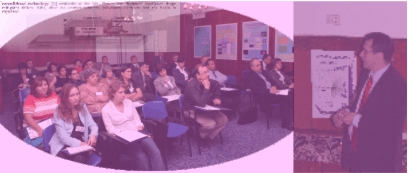
|
Invited speakers CAS 2016
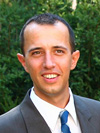 |
Costin Anghel (IEEE M’08, SM’12) received the B.S. and M.S. degrees from the ‘Polytechnica’ University of Bucharest, Bucharest, Romania, in 1998, and 1999 and the Ph.D. degree from the Swiss Federal Institute of Technology, Lausanne, Switzerland in 2004.
He is currently the head of Micro-Nano-Electronics Laboratory, and a Professor with ‘Institut Superieur d'Electronique de Paris’ (ISEP), Paris, France. He held a Post-Doctoral Fellow position at LETI-CEA, Grenoble, France between 2006 and 2008, being involved in the development of the nanostructures using carbon nanotubes. At ISEP, he conducts research projects in the area of simulation and modeling of the novel devices. His research interests are related to the tunneling FETs, non-volatile memories, CNTFETs and organic/molecular devices.
Dr. Anghel is an Associate Editor for IEEE Transactions of Nanotechnology and an expert for the ‘Nanoelectronics’ section of the Observatory for Micro and Nano Technologies (www.omnt.fr).
Abstract |
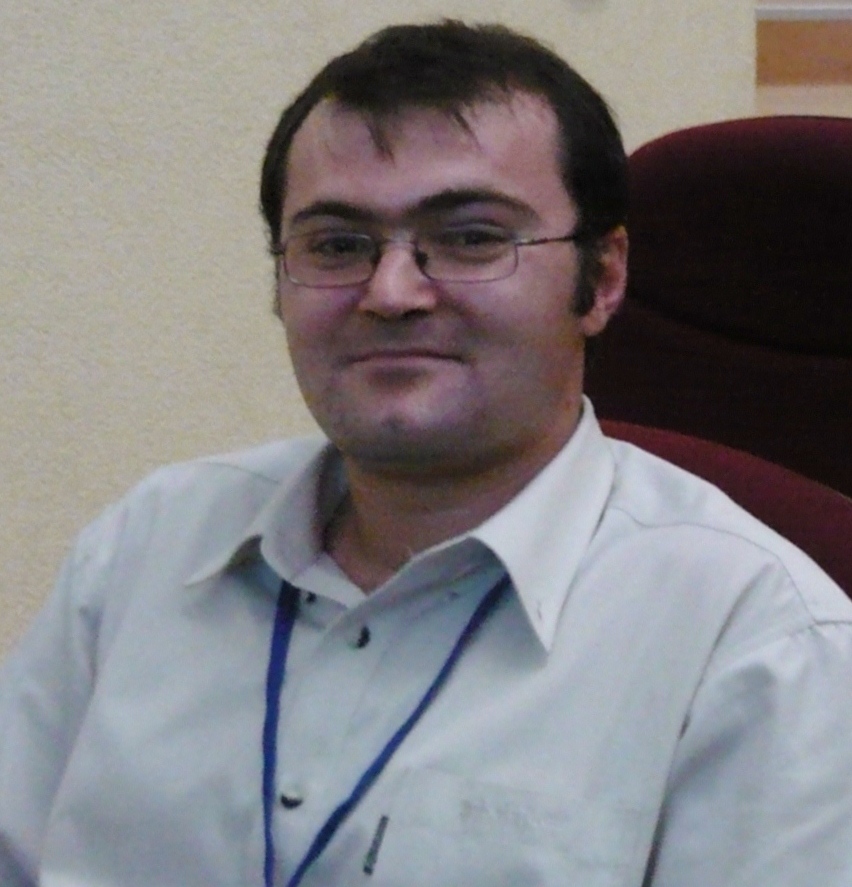 |
Vlad-Andrei ANTOHE, Université catholique de Louvain, Institute of Condensed Mater and NanosciencesLouvain-la-Neuve, Belgium
Vlad-Andrei ANTOHE received a Physics degree at the University of Bucharest in 2002 and an Electronic Engineering degree at Polytechnic University of Bucharest in 2003. He also obtained a Master degree in Electronics from University of Bucharest in 2005. The PhD title was given in Applied Engineering Sciences by University of Louvain (Belgium) in 2012.
His research interests include the nanostructured materials with particular focus on the growth of ordered quasi one-dimensional systems, tailored to specific small-scale electronic and optoelectronic devices. Dr. Antohe was awarded the Romanian Academy Prize for his work on the development and characterization of nanowire-templated microelectrodes for capacitive sensing.
Abstract |
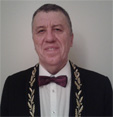 |
Cornel Cobianu, Honeywell Romania
Cornel Cobianu is Honeywell Fellow at Honeywell Romania, Sensor and Wireless Laboratory Bucharest and titular member of Academy of Romanian Scientists. He has received the B.S./M.S. and Ph.D. degree from the Polytechnic Institute of Bucharest, in 1977 and 1991, respectively. Before joining Honeywell in 2003, he was a professor of electrical engineering at University “Valahia” Targoviste, Romania, for three years, and Scientific Director/ Laboratory manager of Institute of Microtechnology Bucharest, as well as a part-time visiting professor-researcher at the University of Twente, The Netherlands, for about ten years.
Dr. Cobianu has published more than 100 papers in international journals and conferences and he was granted with 30 US patents, 2 EU patents and other worldwide patents.
He received The Annual Award of the Technical Section of the Romanian Academy, in 1993 and two Best Paper Awards at international conferences and. He served in the EUROCVD International Advisory board from 1993 till 2011.
Main research interests of Dr. Cobianu are in the field micro and nanotechnologies for the next generation of sensors and micro/nano systems.
Abstract
|
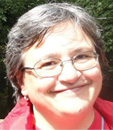 |
Daniela Dragoman, University of Bucharest, Romania
Daniela Dragoman is professor at the Physics Faculty, University of Bucharest. Her areas of interests include the physics and applications of nanostructures, with a particular emphasis on graphene, and modeling of quantum nanoscale devices. She was the recipient of the “Gheorghe Cartianu” award of the Romanian Academy in 1999, and of the Alexander von Humboldt fellowship. Daniela Dragoman has authored or co-authored 6 books at prestigious publishing companies such as Springer and Artech, about 200 scientific papers in ISI journals, and about 70 contributions at international conferences.
Abstract |
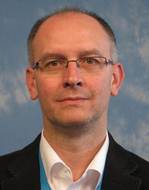 |
Adrian M. Ionescu, Ecole Polytechnique Fédérale Lausanne., Switzerland
Adrian M. Ionescu is Full Professor at the Swiss Federal Institute of Technology, Lausanne, Switzerland. He received the B.S./M.S. and Ph.D. degrees from the Polytechnic Institute of Bucharest, Romania and the National Polytechnic Institute of Grenoble, France, in 1989 and 1997, respectively. He has held staff and/or visiting positions at LETI-CEA, Grenoble, France and INP Grenoble, France and Stanford University, USA, in 1998 and 1999.
Dr. Ionescu has published more than 400 articles in international journals and conferences. He received many Best Paper Awards in international conferences, the Annual Award of the Technical Section of the Romanian Academy of Sciences in 1994 and the Blondel Medal in 2009 for remarkable contributions to the progress in engineering sciences in the domain of electronics. He is the 2013 recipient of the IBM Faculty Award in Engineering. He served the IEDM and VLSI conference technical committees and was the Technical Program Committee (Co)Chair of ESSDERC in 2006 and 2013.
He is director of the Laboratory of Micro/Nanoelectronic Devices (NANOLAB). He is appointed as national representative of Switzerland for the European Nanoelectronics Initiative Advisory Council (ENIAC) and member of the Scientific Committee of CATRENE. Dr. Ionescu is the European Chapter Chair of the ITRS Emerging Research Devices Working Group.
|
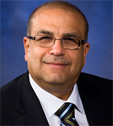 |
Raafat Mansour, University of Waterloo, Ontario, Canada
Raafat Mansour is a Professor of Electrical & Computer Engineering at the University of Waterloo and holds a Tier 1 Canada Research Chair in Micro-Nano Integrated RF systems. He is the Founding Director of the Center for Integrated RF Engineering (CIRFE) at the University of Waterloo (www.cirfe.uwaterloo.ca). He held an NSERC Industrial Research Chair for two terms (2001-2005) and (2006-2010). He is currently the Associate ECE Department Chair for Research. Prior to joining the University of Waterloo in January 2000, Dr. Mansour was with COM DEV Cambridge, Ontario, over the period 1986-1999, where he held various technical and management positions in COM DEV’s Corporate R&D Department. Dr. Mansour holds 33 US and Canadian patents and more than 350 refereed publications to his credit. He is an author of Wiley book and contributed 5 chapters to three other books. He served as the Chair of the Technical Program Committee of the IEEE-IMS2012 Symposium. Dr. Mansour is a Fellow of the IEEE, a Fellow of the Engineering Institute of Canada (EIC) and a Fellow of the Canadian Academy of Engineering (CAE). Dr. Mansour was the recipient of the 2014 Professional Engineers Ontario Engineering Medal for Research and Development.
Abstract |
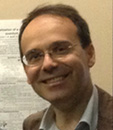 |
Lorenzo Marrucci, Università degli Studi di Napoli Federico II (UNINA), Italy
Lorenzo Marrucci is a professor of physics at the University of Naples Federico II, Italy. He has formerly worked at the University of California, Berkeley and at the Liquid Crystal Institute of Kent State University, Ohio, both in the USA. His research interests include the physics of structured light, in particular of the angular momentum of light, including quantum optical applications, as well as the nonlinear spectroscopy of material surfaces and interfaces, and the photonics of complex optical materials and of photosensitive materials. In 2006 he invented the “q-plate”, a liquid crystal device for converting a variation of the spin angular momentum of light into orbital angular momentum. On these topics, Marrucci has coordinated the FET-Open European project
Abstract |
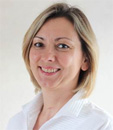 |
Anda Mocuta, IMEC, Belgium
Anda Mocuta received her B.S. Degree in Physics in 1993 from University of Bucharest, M.S. degree in Physics from University of Pittsburgh, and PhD degree in Electrical and Computer engineering in 1999, from Carnegie Mellon University. From 1999 until 2013 she worked at IBM’s Semiconductor Research and Development Center in New York, first as a senior device design engineer and then in management roles. Through various assignments, she covered most aspects of developing a technology to the manufacturing stage – from logic/analog/SRAM device targeting, device development, interaction with compact modelling and TCAD, technology AC benchmarking, technology qualification and early manufacturing; covering technology nodes up to 14nm.
Beginning in 2008 Anda managed the Product-Process Interaction team within IBM, leading technology performance benchmarking, Iddq model development, and also implementing strategies for identifying, measuring, and eliminating sources of systematic across chip variability. Since 2014 Anda has been with imec, in Leuven, Belgium, first as the group leader for the Logic Device Design group where she oversaw device research across various device architectures and materials. Most recently she is the director of Technology Solutions and Enablement department. She is the author of over 50 publications and 22 filed patents.
Abstract |
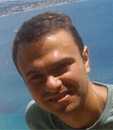 |
Andrei Műller, Institute of Telecommunications and Multimedia Applications (iTEAM) Valencia Spain
Andrei, completed a PhD in Dec. 2011 in Telecommunications engineering (microwave design) at Politechnical University of Bucharest. Andrei performed during his PhD research stages in Germany (18months) in reconfigurable networks design, South Africa (antenna design-3 months) and PureMathematics in Valencia/ Spain(7 months), while working at IMT Bucharest. He completed a Post-Doc inBrest/ France in filter design in 2012. Since 2013 he obtained a Marie Curie Post-Doc Integration Grant(research project) ( SIWTUNE) from the European Union which he is completing in the Telecommunications Institute of Valencia ( in the Microwaves group) until February2017. Andrei received the 2013 Telecommunications award of the Romanian Academy for the 3D Smith chart concept development(www.3dsmithchart.com)
Andrei is since May 2016 as an Associate Editor for new award winning multidisciplinary Journal: IEEE ACCES and the Coordinator of Europe Middle East and Asia for IEEE Young Professionals: Microwave Section.
Abstract |
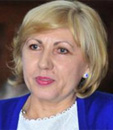 |
Ana Rusu, KTH Royal Institute of Technology, Sweden
Ana Rusu is Professor at the School of ICT, KTH Royal Institute of Technology, Stockholm, Sweden. Shereceived degrees of Diploma Engineer (M. S. degree) in Electronics and Telecommunications Engineering from the Technical University of Iasi, Romania, in 1983, Ph.D. in Electronics from the Technical University of Cluj-Napoca, Romania, in 1998 and Docent in Circuit Theory from the KTH Royal Institute of Technology in 2006. Since September 2001, she has been with the KTH Royal Institute of Technology.
Her research interests include energy-efficient low/ultra-low power circuits and systems for biomedical and wireless communications applications, energy harvesting and power management, wireless sensor networks, high frequency circuits for spin torque oscillator technology, emerging technologies (graphene, SiC), 3D integration technologies and EDA/CAD tools. She has participated in several national and international research projects and has authored or coauthored more than 100 international scientific publications in peer-reviewed journals and conference proceedings, and book chapters.
Abstract |
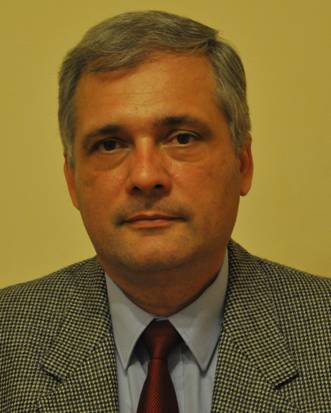 |
Stefan Simion, Electronics and Communications Dept., Military Technical Academy, Bucharest, Romania
Stefan SIMION received the M.Sc. and Ph.D. degrees in electronics and communications engineering, both from the POLITEHNICA University of Bucharest, in 1990 and 2000, respectively. Between 1990 and 1997 he was with the National Institute for Research and Development in Microtehnologies, IMT – Bucharest (the former Institute of Electronic Devices and Circuits, ICCE – Bucharest). In 1997, he joined the Military Technical Academy (MTA) from Bucharest, where he is presently a Full Professor on microwave devices and circuits. In 2015, he obtained the Ph.D. habil. degree in electronics and communications, when he became Ph.D. coordinator. He has been a Visiting Professor at the Univ. Tor Vergata from Rome a few times, for research activities on nonlinear transmission lines and CRLH based devices and circuits. He has authored or coauthored more than 120 scientific papers published in reviews and conference proceedings.
Abstract |
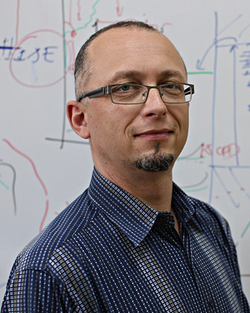 |
Konrad Szaciłowski, AGH University of Science and Technology, Krakow, Poland
Konrad Szaciłowski graduated from Faculty of Chemistry, Jagiellonian University and obtained PhD degree there in 2000. After a postdoctoral stay at Wayne State University (USA) with professor John F. Endicott, where he studied spectroscopy and magnetism of nickel compounds, he has focused his research of photophysics and electrochemistry of wide band gap semiconductors. Currently he leads a research group at Academic Centre of Materials and Nanotechnology, AGH University of Science and Technology. His main research interests concern inform ation processing in nano and molecular systems, memristive effects in molecular semiconductors and photoelectrochemistry of nanoparticles and nanocomposites. He is an author of ca. 70 research papers (Hirsch index = 22), two books and a dozen of book chapters. In free time he enjoys classical music (from Baroque to 21st century) and single malt whisky from Islay distilleries.
Abstract |
|

